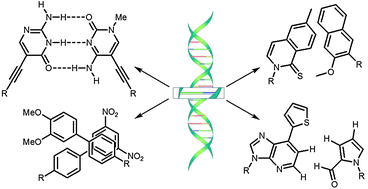Alternative DNA base-pairs: from efforts to expand the genetic code to potential material applications†
Abstract
The complementary Watson–Crick base-pairs, A:T and G:C, have long been recognized as pivotal to both the stability of the DNA double helix and replication/transcription. Recently, the replacement of the Watson–Crick base-pairs with other

- This article is part of the themed collection: Advances in DNA-based nanotechnology

 Please wait while we load your content...
Please wait while we load your content...